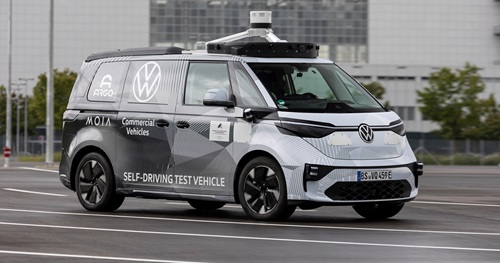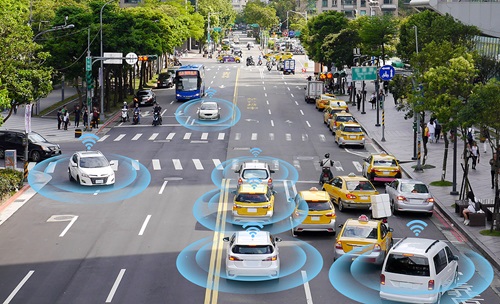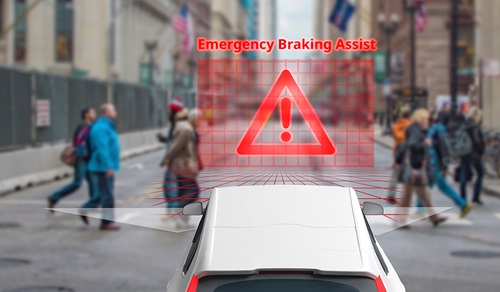The rise and rise of the self-driving, or autonomous car seems to be almost inevitable. Ever since the United States’ Defence Advanced Research Projects Agency (DARPA) started running competitions for scientists and engineers to create robotic, self-driving cars back in the early 2000s, it has seemed almost unquestionable that one day, we would all be sitting back and letting the machines do the work.
When will self driving cars be available?
Well, it depends on who you talk to. Certainly, many car makers agree with the inevitability. Elon Musk has been promising for the past half-decade that Teslas would be able to entirely self-drive any day now. His first deadline came and went in 2021, so make of that what you will.
Others take a longer, but still generally enthusiastic view. Ford has recently released its new ‘Blue Cruise’ adaptive cruise control which can drive the car along very happily for mile after mile without you touching anything, as long as you’re keeping your eyes on the road in general. Mercedes and Audi are both rolling out similar so-called ‘Level 3’ autonomous driving assistants.
What is Level 3?
That’s a question that gets to the heart of how do self driving cars work. Well, if you think of current technology — cruise control that uses radar and cameras to match the speed of the car in front, and steering that uses the same cameras to watch the white lines and keep you pointing straight, but which needs you to keep your hands on the wheel and your eyes on the road — that’s Level 2. Level 3 is similar, but allows you to take your hands — not your eyes, mind — off the job.
Level 4 would allow hands-off and eyes-off, meaning that you could in theory sit back and read a book or watch a film. Level 4 is often referred to as the most potentially dangerous step in the autonomous journey, as the system would still not be capable of dealing with all scenarios, and would disengage and return control to the driver when that point arrives. Which, if you’re in the middle of a chapter of 50 Shades Of Grey, might not be great.
And fully robotic

Level 5, if it ever arrives, is fully robotic. The car drives itself all the time, and there doesn’t even need to be a steering wheel nor pedals on board. This is the target at which the likes of Volkswagen is aiming, with its GEN.Travel concept, and Volvo with its C.360. These are, in theory, so autonomous, that you could even sleep inside them, and they have been touted as potential overnight-driving replacements for short-haul air travel. Why fly from Paris to Berlin, dealing with all the airport hassle, when you could just snooze all the way there?
That idea potentially represents one of the positives of self driving cars — they could utterly change the way in which we use the car. Instead of endless stop-start commuting, ‘platoons’ of digitally connected driverless cars could whisk you across the city, communicating with each other, with traffic lights, and even with public transport connections to give you the most seamless journey possible.
For longer hauls, not only could you sit back and read or work instead of focusing on the road ahead, but cars going to the same destination could ‘talk’ to one another, and drive in convoy, which can be aerodynamically more efficient. Unlike a train or a bus, these autonomous cars could bring you literally from door to door.
Equally, these cars could be shared — while you’re at work or at home, the same autonomous car could be out and about taking someone else to their destination, before popping back to pick you up. That could lead to fewer cars on the road, and fewer cars needing to be built, which would be an environmental win-win.
So all good news then?
There are some significant potential self driving car problems. Dr Brian Caulfield is an associate professor, and head of department at the Centre for Transport Research, part of Trinity College, Dublin. “Companies such as Volkswagen and Tesla are spending huge amounts of money, developing technology such as this and all it’s basically doing is making it easier to drive a car” Dr Caulfield told The Irish Times in an interview.
“From a carbon perspective, from a congestion perspective, these supposed long-haul routes across Europe and the USA, it really would be much more efficient if they were done with rail, especially overnight rail. There is an Australian professor who recently said that autonomous cars are a solution in search of a problem. I think when you see things like this, and Volkswagen is generating a lot of press around this, that it might seem like a cool new way of doing things, but that overnight rail or an overnight bus would be much more efficient from a carbon perspective. You’re moving more people then than just the two who would fit in this vehicle.”
Dr Caulfield also raised the issue of the compatibility of legislation, suggesting that if you started such a journey in Paris, and needed to get to Milan, would all of the countries that you’d have to pass through and enter all have the same autonomous vehicle legislation?

Beyond that, he worries that autonomous vehicles in general are leading us into problems with worsening congestion, and drawing expertise and investment away from public transport. “I think it’s definitely the case that, with autonomous cars, we’d just end up with worse congestion” Dr Caulfield told The Irish Times. “If people thought that the could live in, say, Kilkenny and commute to Dublin in their sleep well then we’d just end up with ever-more urban sprawl, much worse than what we have now. Also, the benefits of autonomous cars in terms of congestion and emissions only really come into play when every single car on the road is autonomous. Before that happens, the benefits just don’t accrue.
“I think autonomous tech is great in the sense of having more sensors on vehicles to improve safety and so on, but the idea of just sitting into a couch which effectively drives itself around? I don’t think that’s a great idea and I do think people would end up leaving public transport and opting for one of these pods. I think that the effort being put into these autonomous cars would be better expended on making electric car batteries better, or on making roads safer. I just don’t think they’re a good idea. It’s a bit of a Pandora’s Box and we’ve bigger problems in transport than just making it easier to drive around.”
So what else?
Then there are the issues of making sure the rest of us are ready for autonomy. Road signage and markings would have to be considerably upgraded across the entire transport network to allow robot cars’ cameras to correctly know what the speed limit is, and where the lanes on the road are. Equally, driver training would have to be altered to teach people how to drive alongside autonomous cars, because however long it takes for robot cars to reach our roads, they won’t all come at once, and there will be a considerable period — decades, maybe even a century — where human drivers will still have to share the road with the robots.

There are ethical questions too — who’s at fault if a robotic car has an accident and kills a person? That’s not a sci-fi question; it’s already happened, when a car being tested by taxi service Uber made a fatal mistake and killed a woman crossing the road in Arizona. What if autonomous cars actually make congestion worse and make emissions go up, because all the people who currently can’t drive or won’t drive will start using them instead of buses and trains? What happens to employment if all of the taxi drivers, and all of the long-haul trucking drivers have been replaced with computers?
In theory, the technology for fully autonomous cars exists right now and, again in theory, could be rolled out tomorrow. However, the fact is that legislation, insurance, road conditions, the cost of the technology, and our own human instinct to do the job ourselves might well mean that the day of the robot car is still some way off. The robots might be ready, but we — probably — aren’t.
